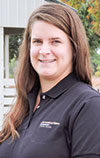With historic cow slaughter numbers we have seen over the past year, I think many of us are wondering what the cull cow market will look like this fall. Typically, the fall cow market sees a sharp decline in price, as sale barns are flooded with cull cows hitting the market as calves are weaned and cows are evaluated for pregnancy, condition, etc. However, because of the increased number of cull cows that have already been slaughtered this year, we may not see the sharp price drop that is typically seen. This may mean a higher price for your cull cows. But many across the country have already had to cull because of the harsh drought over the past year and especially this summer in the southern states.
If you have some open cows but aren’t ready to sell them or can hold onto them, there is an opportunity now to start a fall-calving herd. So what might that look like for Western producers? A fall-calving cow herd typically will breed between November and February and calve from August to November. Depending on your production set-up and when you market your calves, this could open new business opportunities for your operation. Having a second revenue prospect in the late spring when fall calves are marketed may help with having to purchase additional feed or pasture for a fall herd.
Calves born in early fall will need to be fed through the winter alongside their dam. This will increase your winter feed costs; however, if you have additional feed resources during this time of year such as post-harvest crop aftermath, fall and winter cover crops or winter range you could provide supplement on, this may still work in your current ranching plan. Calves born in early fall can be marketed earlier in the year or be marketed at a heavier weight come weaning time. Seedstock producers can also benefit from this, being able to sell bulls at an older age that may be able to cover more cows. The addition of a fall-calving herd can diversify your ranch income by providing another source of income in the spring. That income can be used to purchase additional feed needed by a fall-calving herd, as their requirements will be much higher over the winter months with a young calf at their side than it would if they were a spring-calving cow.







